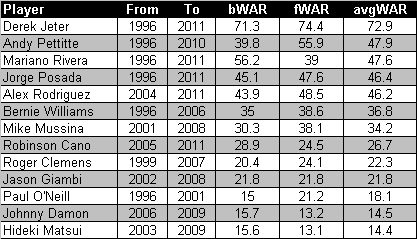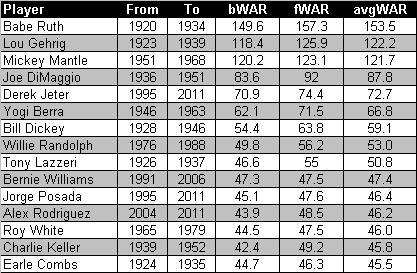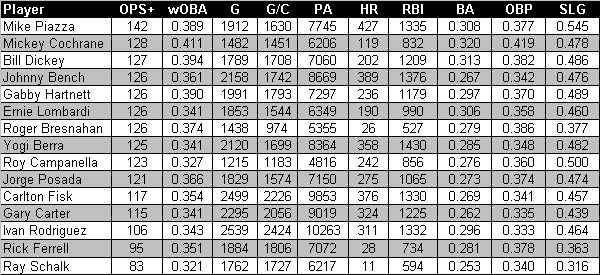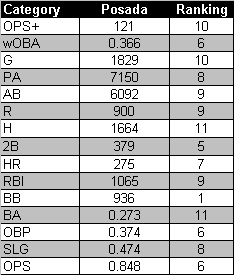Please enjoy the deadline work of two heavyweights–Jimmy Cannon and Murray Kempton–on the unlikely winner and hard luck loser of Game 5 of the 1956 World Series. The 2-0 win by the Yankees gave them a 3-2 series lead (they’d win it in 7) but the game is remembered because Don Larsen threw the only perfect game in the history of the World Series.
From The New York Post, here’s Cannon on Larsen and Kempton on the losing pitcher, Sal Maglie.
“Perfect Day for a Dim-Time Guy”
By Jimmy Cannon

You’re Don Larsen, the dim-time guy who pitched the perfect game. You’re a midnight kid who doesn’t miss any laughs. It’s one more for the road and no one ever gets sun-burned by a sallow morning sun. But yesterday on a sun-spangled afternoon you achieved everlasting fame in baseball. You pitched a no-hitter, the first in any World Series game, the perfect one because no one reached first base in nine rapid innings. So let them rib you about busting up a past-curfew car in St. Pete last spring. You weren’t hurt and yesterday it was 2-0 against the Dodgers in the fifth game of the World Series in Yankee Stadium.
All the night-long bus rides around the no-sleep leagues, from the village of Aberdeen to Globe-Miami in the Arizona Texas League, through the Three Eye League, through the North League, through Wichita and Wichita Falls, they brought you to the Stadium yesterday. From the St. Louis Browns to the Baltimore Orioles, and to the Yankees in ’55 after being dropped back to Denver, there fun all the way. And some grief, too, because in ’49 in Globe-Miami the right arm was sore. It wasn’t too much but down there you don’t get much help from specialists with the club picking up the bill. You were an outfielder for a while, a respectable one but pitching is your business. The arm healed itself and you returned to your trade.
You don’t counterfeit humility for the reporters. You don’t turn it on for the crowd. You’re a tall, slow-walking man and that’s the way you go. You kept to the usual routine of your life. You knocked over a few beers, grabbed a couple of laughs and hit the sheets at midnight, You belt a few every night and why not? Why go to bed early? You knew you don’t sleep. You’re a dim-time guy.

It occurred to you in the sixth or seventh inning you might be the first man to throw a no-hitter in a Series. You can’t remember exactly when this thought took shape. You don’t know who the batter was. You were taking them one at a time, hitter by hitter. The infielders didn’t give you any advice. Even Joe Collins, who generally reminds a pitcher to cover first when a lefthanded hitter is up, stayed away from you.
On the bench, Billy Hunter rolled the practice ball out to the infield. He made certain he did it every inning. Once Mickey Mantle came in and sat where Hunter had been all game long. Whispering so you wouldn’t hear it, Hunter asked Mantle for lis lucky seat. They were guided by superstition as the innings passed, each man following the same routine but not mentioning it to you.
Under the stands, Rip Coleman, who rooms with you on the road, tried to walk out the tension. He didn’t want to see the base hit that would take it away from you. A grounds-keeper told Coleman you were pitching a no-hitter. And Coleman didn’t reply, just glared at the guy.

You didn’t wind up once yesterday as you pitched the first perfect game since Charlie Robertson did it for the White Sox against Detroit during the regular season of 1922. You figured Del Baker, the Red Sox coach, was catching your pitches and tipping off the hitters. So you experimented without a wind-up after the Yankees had won the pennant this year. But your roommate claims you got this style from a comic book character called The Ghoul.
You used the fast ball, the curve ball and the slider. Only once, in the first inning to Pee Wee Reese, did you throw three balls to hitter. It came down to three and two and they the shortstop stood transfixed as a third strike was called by Babe Pinelli. In the ninth Yogi Berra told you that you had to get Jackie Robinson who was the first hitter. You threw him out, then Roy Campanella hit a ground ball to Martin and Dale Mitchell, batting for Sal Maglie, took a third strike.
At times you resembled a reflective man throwing stones into a river, so easy was your motion. Occasionally, you examined the ball as if it were made of crystal and could reveal the secrets of the innings to come. Against you, Maglie, sad as old men are who desperately hold onto their youth, squeezed the ball in both hands as if it were made of snow and he could press it smaller. He was marvelous, too, and stingy with his five hits. But Mantle hit a curve ball that slanted toward his wrists for a home run in the fourth inning. In the sixth a single by Andy Carey, your bunted sacrifice and Hank Bauer’s leftfield single made the other run.
Only four times was your perfect game in jeopardy. In the second, Robinson’s line-shot jumped out of Carey’s glove but Gil McDougald fielded it. In the fifth, Mantle, running sideways, made a spectacular back-handed catch of Gil Hodges’ fly. Also in the fifth, Sandy Amoros’ fly ball abruptly turned foul. If it had fallen fair, it would have been a home run. The one-leap ground ball Jim Gilliam hit to McDougald in the seventh was difficult, but the shortstop performed the play.
Early in the season, you were a five-inning pitcher but your stamina came back. You pitched one-and-a-third inning in the second game of this Series, but the four runs they made off of you on a hit and four bases on balls were unearned. The hell with al [sic] that. You’re Don Larsen, a dim-time guy, who pitched the perfect game.

“Maglie: Gracious Man With Dealer’s Hands”
By Murray Kempton

There was the customary talk about the shadows of the years and the ravages of the law of averages when Sal Maglie went out to meet the Yankees yesterday afternoon. It was the first time, after all the years, that he had ever pitched in Yankee Stadium, the home of champions.
He threw that humpbacked setup pitch that is last in the warm up, and then for the first time looked at Hank Bauer. He threw the curve in; Hank Bauer made a gesture at hunting; and the strike was called.
The hitter leaned over a little; the pitch was high; Hank Bauer skittered back in haste and the ball went by the catcher’s mitt and back to the wall.
“If I know Sal,” the old Giant writer in the stands said, “He threw that to tell -em on. He knows the Yankees probably think he’s a little tired. H’s saying to them, look fellas, I’m still around. You’ve got to come and get me.”
“The call was for an inside pitch,” said Sal Maglie later. “I threw it too high and it got away.” He is a gracious man who takes no pride in the legend of professional venom.
He worked his arm a little and blew on his hands as though he came from a world no sun could warm. And then Bauer plunked it up to Reese; Maglie looked once at the ball and then at the fielder, and, without needing to see the catch, bent over and worked his long, brown, dealer’s hands into the resin bag.
He got Joe Collins to hit on the ground to the wrong field; MickeyMantle went all the way around; Sal Maglie heard the sound and judged it. The left fielder was still circling under it when Sal Maglie crossed the foul line on his way to the dugout. He gives very little and can afford to to spend less.
He went that way through the line-up for the first three innings. It seemed a memorable incident when the first pitch to the eighth Yankee batter was a ball. The utility infield of the fifth-place team in the Westport Midget League League would have eaten up anything hit by either team in those three perfect 18 outs. “I figured,” said PeeWee Reese, “that both you guys weren’t giving anybody anything, and we’d have to call it at midnight.”
Sal Maglie ended the third for the Dodgers, walking out slowly carrying one bat, digging his spikes In as though anything ls possible in this game, driving the first pitch straight to Mickey Mantle and walking over towards third base to change his cap and get his glove. He threw the warm-up pitches; Roy Campanella was standing up and almost dancing at the plate.
Maglle got the two quick strikes on Bauer who hit to Jackie Robinson; Maglle did not look at the play; he was busy with the resin. He pushed the curve by Joe Collins; it was the third strike. Mantle was back.
The first strike was a curve and called. There were no times intrudlng upon the memory when he had seemed more sharp. He threw the next pitch outside, and then hit the corner again. He waited awhlle, rubbing his fingers on his shirt, wiping the afternoon’s first sweat of his forehead. He threw a pitch on the corner that was low by the distance of a bead or sweat from the skin; it was that close and was called a ball.
Mantle hit a foul. Sal Maglie knew it was out of play; the left fielder was still running and he was working on a new ball. The next pitch he threw Mantle was down the middle a little inside. Roy Campanella said later that he hit on his fists. Sal Maglie watched it almost curve and then stay fair in the stands; with the unseeing roar all around him. he walked back to the rubber and kicked it once.
“He’d been fouling off the outside pitches,” he said later. “I thought I’d try him Inside once.” He stopped for a minute, naked and dry beside his locker, the skin showing through the thin hair above his forehead. “That shows what can happen when you’re thinking out there and the other guy isn’t.” That was as close as he came to suggesting that God is too tolerant with the margin of error he assigns the very young.
Then Yogi Berra hit one hard to the wrong field; Duke Snider ran the distance of years, and tumbled up with lt. Sal Maglie had no reason lo know it then, but that was the inning and the run.

In the fifth Enos Slaughter was walked very fast. Billy Martin bunted. Sal Maglie came scuttling onto the grass and snatched the ball and turned around and fired it high and smoky to second just in time, a 40-year-old-man throwing out a 40-year-old-man and knowing he had to hurry. He was sweating hard by this time. Harold Reese went up half his height and knocked it into the air and recovered it for the double play. Sal Maglie was watching the way the ball went now; the sound was different; for the first time today he had to think of the fielders.
Don Larsen went on making the rest period painfully short. Sal Maglie took his warmups for the sixth; he was throwing the last one in hard now. Andy Carey hit one over his head into center and the old remembered tight rope walk had begun.
Larsen bunted the third strike; Maglie and Campanella scrambled off too late to get the runner at second; they had made their mistake. Carey went far off second; Bauer slapped the ball to lwft. Sal Maglie drove himself over to back up third, but the run was in and safely in. Walter Alston came out; the conference went on around Maglie. A man in the stands said that if Labine was reasy, it was time to bring him in. “Take Sal out?” Campanella said later, “the way he was pitching?” Joe Collins hit a low, hard single; Maglie went over to cover third again and came back slamming the ball into his glove. Mantle was up.
The first pitch was out of control; then he threw two strikes, one called, one swinging. Mantle hit the ball to the first baseman who threw to the catcher, who threw not well to the third baseman, who fell away and threw around Bauer to get him. After the game, Sal Maglie looked at Jackie Robinson sitting sombre across the dressing room: in a moment of surprise, Robinson’s hair was gray. “That was a throw,” he said. “Him falling away like that.” Maglie saw it and walked to the third base line and waited for the rundown so as not to interfere, like a waiter at his station, and then walked slowly back to the dugout.
He was the last to come out after the swift Dodger half of the seventh. That appears in the box score to have been all it was, except that in the bottom of the eighth, Don Larsen was the first to bat. Sal Maglie went on with his warmups; alone in that great ballpark, he and Campanella were not looking at the hitter. He struck out Larsen; he struck out Bauer; he struck out Joe Collins swinging. When he walked back, the crowd noticed him and gave him a portion of its cheers. It was the last inning of the most extraordinary season an old itinerant, never a vagrant, ever had. “If figured,” he said later, “that, for me, either way, it was the last inning and I didn’t have to save anything.”
”I would like to see him.” he said later, “pitch with men on bases.” Someone asked him if he had minded Larsen getting his no-hitter. “I might have wanted him to get it,” he answered, “If we hadn’t had a chance all the time.”
They asked him was he satisfied with the game he pitched. “How,” said Sal Maglie, “am I to be satisfied? But you got to adjust yourself.” To time and to ill chance, and the way they forget, you got to adjust yourself. Someone asked if you knew when you had a no hitter, and he said, of course you do. You remember who had hit, for one thing. “lf you ask me two years from now,” said Sal Maglie, “I’ll be able to tell you every pitch I threw this year.” He said it, in passing naked, his body white except for the red from countless massages on his right arm, tearing his lunch off a long Italian sausage.
On the other side of the room, somebody asked Campanella if Maglie had made any mistakes out there. “Sal, make mistakes?” said Campanella. “The only mistake he made today was pitching.” He pulled on jacket and turned to what was last of the assemblage. Maglie was going now, as losers are required to go, to get his picture taken with Don Larsen in the Yankee dressing room.
“I told you,” chided Roy Campanella, as Sal Maglie went out the door, “that there should be days like this.”

All efforts have been made to reach the rights-holders for these stories. If you are the rights holder and would like the material removed, please contact me.—Alex Belth








![BYB-Bernie_3[1]](http://www.bronxbanterblog.com/wordpress/wp-content/uploads/2014/01/BYB-Bernie_31.jpg)
![babe-ruth-lou-gehrig[1]](http://www.bronxbanterblog.com/wordpress/wp-content/uploads/2014/01/babe-ruth-lou-gehrig1.jpg)
![48363-CMGR-18Fr[1]](http://www.bronxbanterblog.com/wordpress/wp-content/uploads/2014/01/48363-CMGR-18Fr1.jpg)
![ny_50yankess_33[1]](http://www.bronxbanterblog.com/wordpress/wp-content/uploads/2014/01/ny_50yankess_331.jpg)































